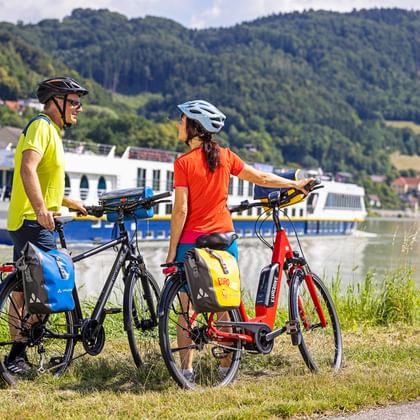Introduction to the Danube Cycle Path from Passau to Budapest via Vienna
The Danube Cycle Path passes through ten countries from Germany to the Black Sea and extends for more than 1700 kilometres. The route is one of the most popular cycling holiday routes and the 300 km stretch between Passau and Vienna is the most famous and well-known cycling holiday section.
The Danube Cycle Path is a classic used by thousands of cyclists every year. The route was one of the first long-distance cycle paths and is still one of the most popular river cycle paths in Europe. You can cycle through the beautiful landscapes along the river without major inclines, which makes the cycle path along the Danube very attractive for a first-time cycling holiday and families with children.
You’ll have to decide which part of the Danube is the most beautiful to book. The Passau to Vienna section is more picturesque, but the Vienna to Budapest route allows you to visit 3 capital cities along the way.

Danube Cycle Path route profile

